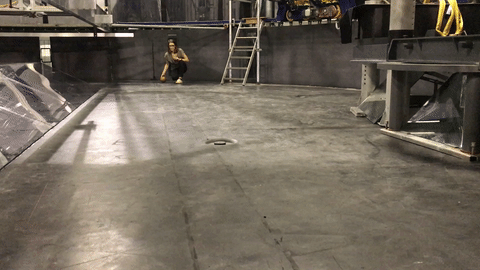We have started rotating and filling water into our 13-meter-diameter rotating tank! So exciting! Pictures of that to come very soon.
But first things first: Why do we go to the trouble of rotating the swimming pool?
The Earth’s rotation is the reason why movement that should just go straight forward (as we learned in physics class) sometimes seems to be deflected to the side. For example, trade winds should be going directly towards the equator from both north and south, since they are driven by hot air rising at the equator, which they are replacing. Yet we see that they blow towards the west in addition to equatorward. And that is because the Earth is rotating: So even though the air itself is only moving towards the equator, when observed from the Earth, the winds seem to be deflected by what is called the Coriolis force.
The influence of the Coriolis force becomes visible when you look at weather systems, which also swirl, rather than air flowing straight to the center where it then raises. Or when you look at tidal waves that propagate along a coastline rather than just spreading out in all directions. Or when you look at ocean currents. But all of these effects are fairly large-scale and not so easy to observe directly by just looking up in the sky or out on the ocean for a short while.
There are however easy ways to experience the Coriolis force when you play on a merry-go-round or with a record player or with anything rotating, really. Those are obviously spinning much faster than the Earth, and that’s exactly the point: The faster rotation makes it easy for us to see that something is going on. And obviously, Nadine and I had to test just that on the best merry-go-round that I have ever seen:
And that is what we’ll use in our experiments, too: Since our topography is a lot smaller than the real world it is representing, we also have to turn the tank faster than the real world is turning in order to get comparable flow fields. How to exactly calculate how fast we need to turn we’ll talk about soon. Stay tuned! 🙂

